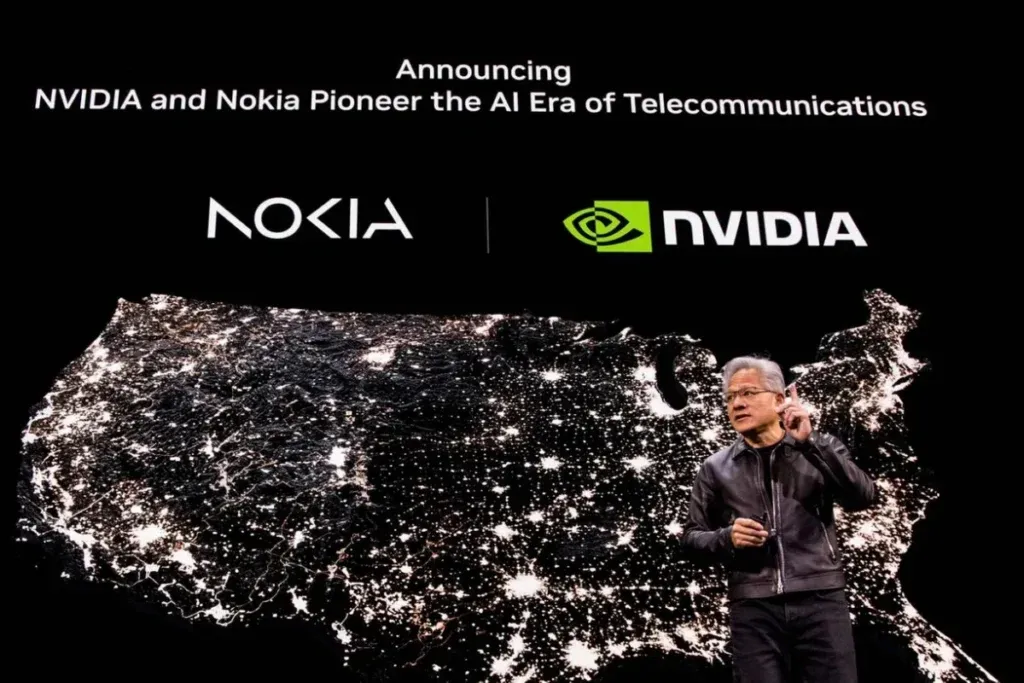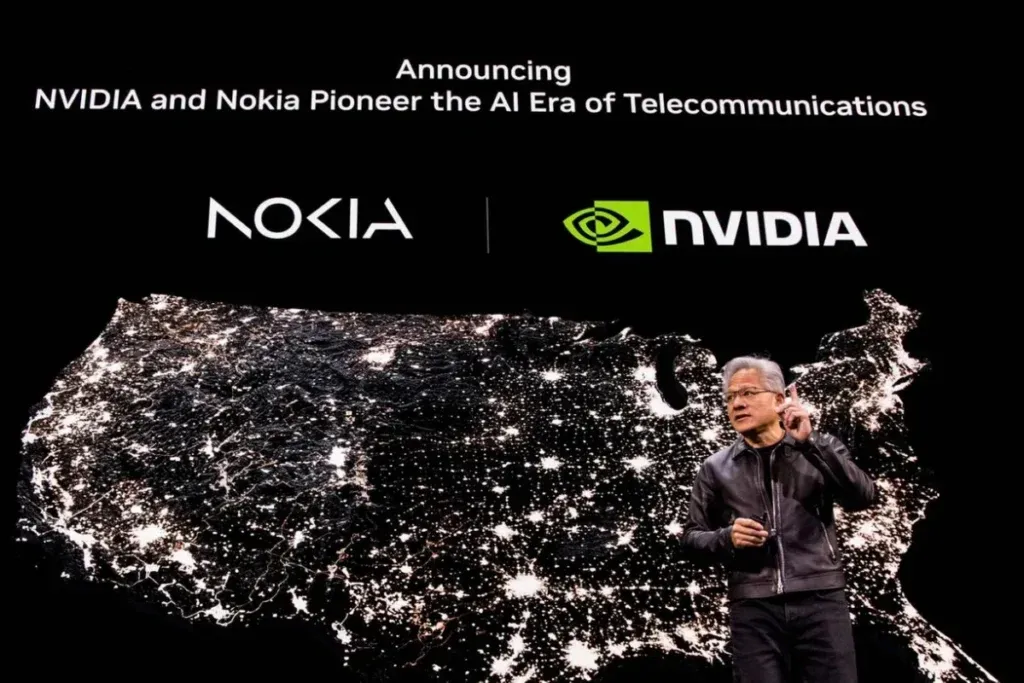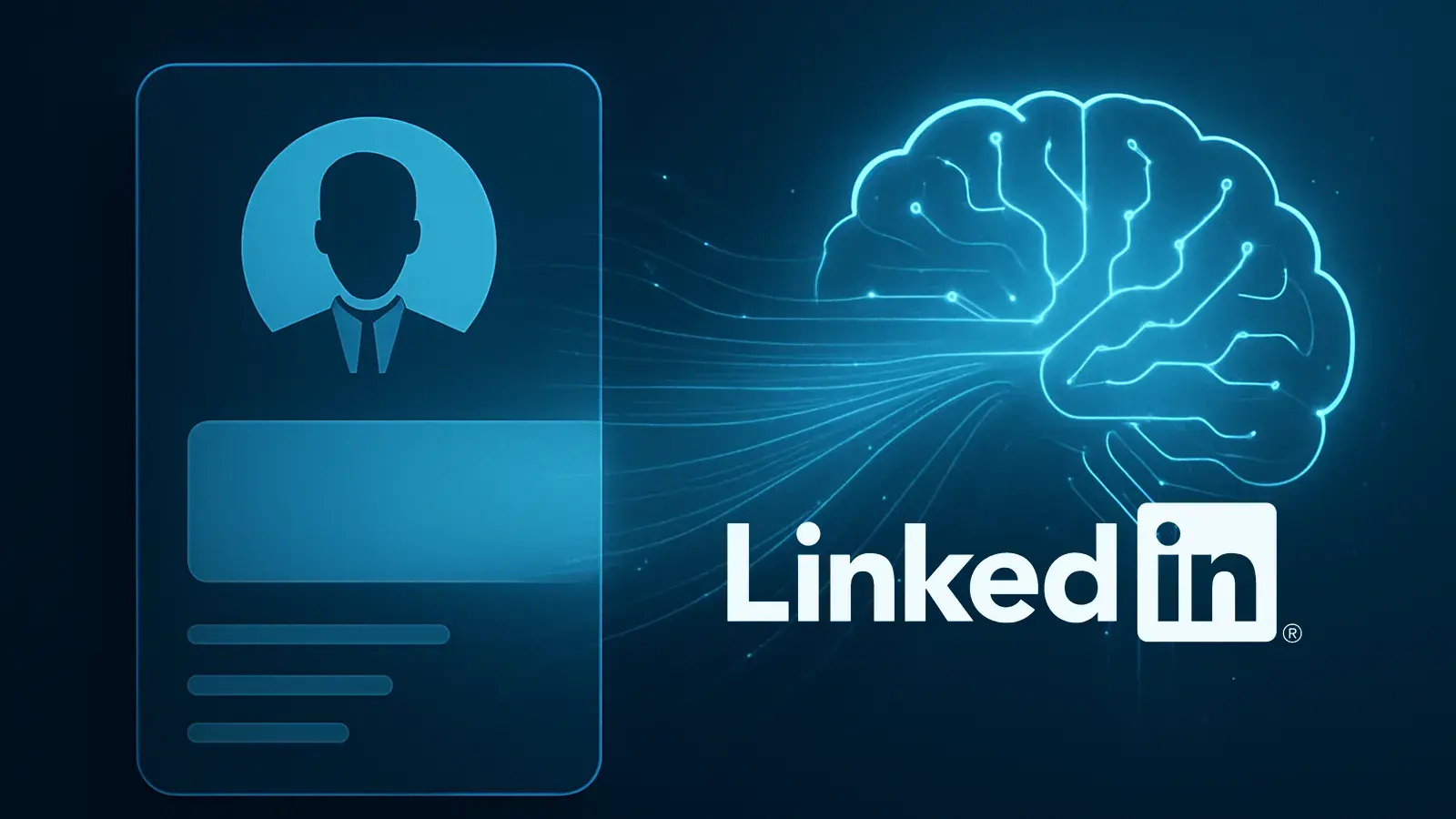This decision reflects a broader trend across social media platforms. Companies are increasingly leveraging user-generated content to develop and refine their generative AI capabilities. Your profiles, posts, comments, and interactions now serve a dual purpose : connecting you with professional opportunities and feeding machine learning algorithms.
The LinkedIn privacy policy update raises critical questions about data ownership and user consent in the AI era. You need to understand what this means for your professional presence online. The platform's approach to personal data usage directly impacts how your information shapes future AI tools that will, ironically, be used to engage with you and millions of other professionals.
This isn't just another terms-of-service update you can ignore, it's a fundamental change in how your digital footprint gets utilized.
LinkedIn and its evolution towards generative AI
LinkedIn is the world's largest professional networking platform, owned by Microsoft since 2016. With over 900 million members worldwide, it has continuously evolved to serve professionals, recruiters, and businesses looking for meaningful connections.
The integration of generative AI content models represents LinkedIn's strategic move to enhance user experience through intelligent automation. LinkedIn will use its users' personal data to train its AI with specific objectives in mind :
- Streamlining recruiter workflows : AI-powered tools help talent acquisition professionals identify and reach qualified candidates faster
- Empowering content creation : Members receive intelligent suggestions for profile updates, post drafts, and professional messages
- Personalizing job recommendations : Matching algorithms become more sophisticated through continuous learning
The technology behind this shift relies on AI-assisted content creation that analyzes patterns in user profiles, posts, comments, and engagement data. These generative AI models process vast amounts of professional content to understand industry-specific language, career trajectories, and networking behaviors.
The system then generates contextually relevant suggestions, whether you're crafting a connection request or updating your professional headline.
Personal data used to train AI
LinkedIn's approach to using personal data centers on two primary categories of information. The platform collects user profile data : including your job titles, skills, work experience, education history, and professional connections. The second category includes public LinkedIn content : your posts, articles, comments, reactions, and shared content visible to other members.
This information feeds directly into training artificial intelligence through a process where AI models analyze patterns, language structures, and professional contexts. The system examines how professionals describe their expertise, how recruiters phrase job opportunities, and how successful networking interactions unfold across the platform.
You'll see this data utilization manifest in practical applications :
- Recruiter tools that suggest candidate profiles matching specific job requirements based on skills and experience patterns
- Content creation assistants that help you draft profile summaries using industry-standard language from similar professionals
- Smart messaging features that recommend connection requests or follow-up messages based on successful communication patterns
- Job matching algorithms that identify opportunities aligned with your career trajectory and professional interests
The AI learns from millions of professional interactions, refining its ability to understand career paths, industry terminology and professional networking dynamics.

Updated privacy policy and options for users
Starting Monday, LinkedIn will use its users' personal data to train its AI, marking a significant shift in how the platform handles member information. The updated privacy policy grants LinkedIn explicit rights to process your profile data, posts, articles, and comments for AI model development.
You can protect your data through a straightforward process in your LinkedIn privacy settings. Navigate to your account settings, select "Data Privacy," then locate "Generative AI Improvement." Toggle this option off to exercise your objection to data usage for AI training purposes.
This approach mirrors the Meta privacy policy implemented in June 2024. Meta introduced similar data usage policies across Facebook, WhatsApp, and Instagram, requiring users to manually opt out through privacy settings. The key difference ? LinkedIn provides a dedicated toggle specifically for AI training, while Meta's opt-out process involves submitting a formal objection form. Both companies default to automatic enrollment, placing the responsibility on you to actively decline participation in their AI development programs.
Impacts for users and recruiters
Impact on recruiters
The impact on recruiters is evident in significantly improved search capabilities. Generative AI algorithms enable more precise targeting of potential candidates by analyzing skills, experience, and professional interactions with unparalleled depth. You will see more relevant profile suggestions, more personalized outreach messages, and rapid identification of talent that exactly matches the criteria you are looking for.
Impact on users
For users, AI-assisted content creation is radically transforming the way you write your posts, update your profile, or compose your professional messages. AI offers you optimized wording, suggests improvements, and helps you structure your ideas in a more impactful way.
LinkedIn data privacy
LinkedIn data privacy is becoming a key issue in this equation. Every interaction, every post, and every element of your profile now feeds into AI models. Your professional information, career preferences, and behavior on the platform help train systems that will then serve other users, creating a cycle of continuous improvement that raises legitimate questions about control over your personal data.

Benefits and risks associated with the use of data for generative AI
The benefits of using personal data go beyond just making things easier. LinkedIn's AI can provide highly personalized job recommendations by looking at your career path, skills, and how you engage with the platform. It can suggest content that matches your professional interests and help you create compelling profile summaries that resonate with your target audience. Recruiters can also benefit from advanced matching algorithms that find candidates who may not show up in traditional keyword searches.
However, there are also privacy risks that you need to be aware of. Your work history, connections, and interactions with content become training material for AI models that you didn't explicitly agree to support. This data could expose sensitive information about career changes, salary expectations, or job search activities. There is a potential for non-consensual exploitation when your carefully crafted professional image becomes fuel for algorithms without your active involvement in the decision-making process.
Opposition to data usage requires informed consent. You have the right to know how your information influences AI outputs and whether your data is included in responses generated for other users. Finding a balance between innovation and privacy protection relies on your ability to make informed decisions about your online presence.
Comparison with other social networks : Meta as an example
Starting Monday, LinkedIn will use its users' personal data to train its AI, but this approach isn't unique to the Microsoft-owned platform. Meta introduced similar changes to its privacy policy back in June, affecting Facebook, WhatsApp, and Instagram users across its entire ecosystem.
Similarities between LinkedIn and Meta's data collection practices
Meta's data collection practices mirror LinkedIn's strategy in several ways :
- Both platforms harvest public posts, user interactions, and profile information
- Users receive the ability to opt out through privacy settings
- The stated goal centers on improving AI-powered features and personalization
Key differences between LinkedIn and Meta's data collection strategies
The key difference lies in scale and scope. Meta's approach encompasses multiple platforms simultaneously, creating a broader data collection network. LinkedIn focuses specifically on professional content and career-related information, making its AI training more specialized.
User reactions to these changes
User reactions to these changes have been mixed across both platforms. Privacy advocates express concern about the default opt-in approach, arguing companies should require explicit consent before using personal data.
Many users remain unaware of these policy updates, highlighting the need for clearer communication from social media companies about how they leverage user-generated content for AI development.

How can we prepare for change starting November 3, 2025 ?
The effective date of the change is set for November 3, 2025. You need to mark this date in your calendar and take action before LinkedIn begins using your data to train their generative AI models.
Adjusting Your Privacy Settings
You can control how LinkedIn uses your information by accessing your LinkedIn privacy settings :
- Navigate to your LinkedIn account settings
- Click on "Data Privacy" in the left-hand menu
- Locate the "Generative AI Improvement" section
- Toggle the opt-out option to prevent your data from being used
You should review these settings regularly, as platform policies can evolve over time. LinkedIn provides detailed documentation in their Help Center explaining each privacy option available to you.
Staying Informed
Staying informed about LinkedIn's new AI policy requires accessing official resources :
- LinkedIn's official blog for policy announcements
- The platform's Privacy Policy page for detailed terms
- Email notifications from LinkedIn regarding account changes
- Microsoft's AI transparency reports
You can subscribe to LinkedIn's policy update notifications to receive alerts about future changes affecting your account.
Conclusion
A reality that demands your immediate attention and action. The integration of IA générative LinkedIn represents a pivotal moment in how professional networking platforms operate, and you need to decide where you stand.
The avenir du recrutement digital looks increasingly automated and intelligent, but this evolution shouldn't come at the expense of your privacy. You have the power to shape how your professional information gets used. Take control of your data by :
- Reviewing your privacy settings before November 3, 2025
- Understanding exactly what you're consenting to
- Making informed decisions about your digital footprint
Responsible use of personal data isn't just LinkedIn's responsibility, it's yours too. The tools are there. The options exist. What matters now is whether you'll take the time to protect your professional identity while still benefiting from AI-powered features that can genuinely enhance your career prospects.
Your data. Your choice. Your professional future.
FAQs (Frequently Asked Questions)
What is the major change announced by LinkedIn starting November 3, 2025, regarding the use of personal data ?
Starting November 3, 2025, LinkedIn will begin using its users' personal data, including public profiles and content, to train its generative artificial intelligence models in order to improve the user experience and recruiter prospecting.
What types of personal data will LinkedIn use to train its generative AI ?
LinkedIn will primarily use data from user profiles and public content shared on the platform to feed and train its generative AI models.
How can users opt out of their data being used for AI training on LinkedIn ?
Users can opt out of their data being used via the updated privacy settings on LinkedIn. The process is simple and accessible before November 3, 2025, allowing for greater control over their personal information.
What are the expected benefits for recruiters from the integration of generative AI on LinkedIn ?
The integration of generative AI will enable recruiters to target more accurately, facilitate AI-assisted content creation, and optimize digital recruitment through more detailed analysis of user data.
What privacy risks are associated with using personal data to train generative AI on LinkedIn ?
The main risks relate to privacy, particularly the potential for non-consensual exploitation of personal information. It is therefore essential to ensure informed consent and complete transparency in this new policy.
How does LinkedIn's privacy policy compare to Meta's regarding the use of data for generative AI ?
Like Meta (Facebook, WhatsApp, Instagram), LinkedIn uses personal data to train its generative AI models. However, LinkedIn has implemented clear options for users to opt out of this use, with increased transparency around these practices.




